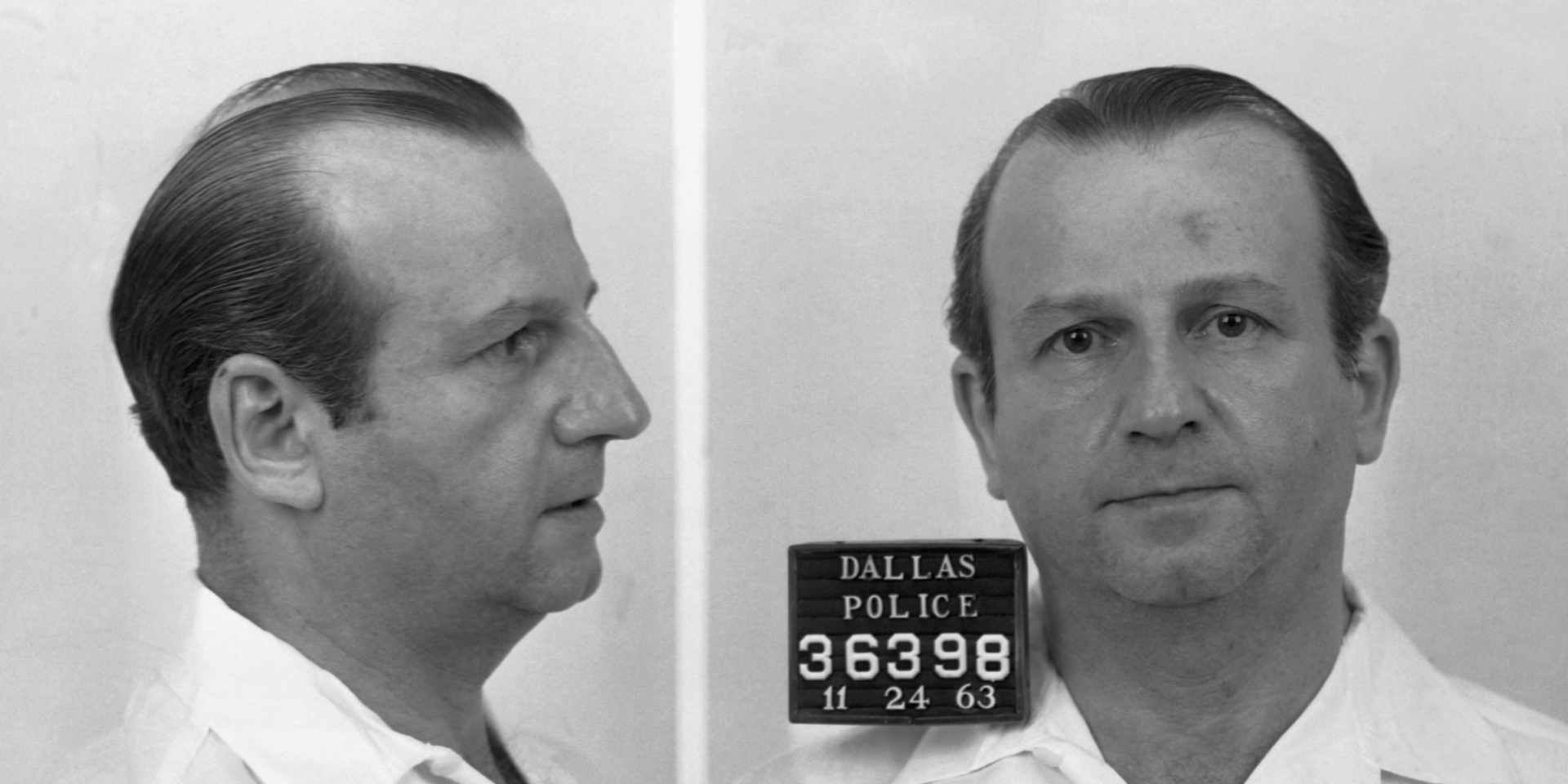Who Was Jack Ruby?
Jacob Rubenstein, later known as Jack Ruby, was born in Chicago in 1911, the son of Polish immigrants. Official records list conflicting dates for Ruby’s birth; however, he used March 25, 1911, on his driver’s license.
Did you know?
In 2009, the gray fedora worn by Jack Ruby when he shot Lee Harvey Oswald sold for $53,775 at a Dallas auction. The shackles Ruby wore when dying at Dallas’ Parkland Memorial Hospital sold for over $11,000, while an X-ray of Ruby's head went for more than $700.
Ruby, one of eight siblings, had a troubled childhood in Chicago and spent time in foster care. He never graduated from high school and spent years working odd jobs, including as a door-to-door salesman and ticket scalper. During World War II, Ruby served in the Army Air Forces, working as an aircraft mechanic at U.S. bases. By the late 1940s, he had moved to Dallas, where he became a small-time operator in the world of nightclubs and gambling. He also racked up a series of arrests for minor offenses.
Ruby had fringe connections to organized crime and a reputation as a name-dropper and publicity seeker. He never married and possessed no known political affiliations.
The Kennedy Assassination
On November 22, 1963, President Kennedy and his wife Jacqueline (1929-1994) were riding with Texas Governor John Connally (1917-1993) and his wife in an open limousine in a presidential motorcade through downtown Dallas. As their vehicle passed the Texas School Book Depository Building at 12:30 p.m., Lee Harvey Oswald, who had started working at the building the previous month, allegedly fired three shots from the sixth floor, fatally wounding the 46-year-old president and seriously injuring Governor Connally. Kennedy was pronounced dead 30 minutes later at Dallas’ Parkland Memorial Hospital. Less than an hour after Kennedy was shot, Oswald killed a policeman, J.D. Tippit (1924-1963), who questioned him on the street near his Dallas rooming house. A short time later, police arrested Oswald, a Louisiana native and ex-Marine who lived for a time in the Soviet Union, at a movie theater. He denied killing Tippit and Kennedy, but was soon arraigned on charges of murdering both men.
Jack Ruby Kills Lee Harvey Oswald
On November 24, a crowd of reporters, policemen and camera crews gathered to watch as Oswald was brought to the basement of the Dallas city jail en route to a waiting car scheduled to transfer him to the county jail. As a handcuffed Oswald, flanked by detectives, came into view, Jack Ruby, stocky, balding and wearing a dark suit and gray fedora, lunged forward from the crowd. At approximately 11:20 a.m., Ruby fatally wounded Oswald with a single shot to the abdomen from a concealed .38-caliber Colt Cobra revolver. Television cameras captured the attack, which was witnessed live by Americans across the country. The shooter, wrestled to the ground by police, shouted, “You all know me. I’m Jack Ruby.”Oswald was rushed to Parkland Hospital, where he soon died in surgery. Ruby, charged with murder, claimed he killed Oswald so Jacqueline Kennedy wouldn’t have to return to Dallas for a trial.
Jack Ruby’s Conviction and Death
At his high-profile trial, Jack Ruby was defended pro bono by prominent California attorney Melvin Belli (1907-1996), who argued that psychomotor epilepsy had caused Ruby to mentally black out and subconsciously shoot Oswald, and that due to this condition he should be treated with leniency. However, on March 14, 1964, after deliberating for just over two hours, a jury found Ruby guilty of murder with malice and sentenced him to death by the electric chair. Belli expressed outrage at the verdict and claimed that Ruby, a Jew, was a victim of discrimination.In October 1966, the Texas Court of Criminal Appeals reversed the conviction on the grounds of improper admission of testimony and the fact that Ruby could not have received a fair trial in Dallas at the time due to excessive publicity. A new trial was scheduled to take place in Wichita Falls, Texas, in February 1967. However, on December 9, 1966, Ruby was admitted to Parkland Hospital (the same place where Kennedy and Oswald had died) with pneumonia. Soon after, he was diagnosed with lung cancer. On January 3, 1967, he died at age 55 from a blood clot in his lung.
What Motivated Jack Ruby?
Some people lauded Jack Ruby as a hero for killing the president’s alleged assassin, while others believed he murdered Oswald to keep him from revealing a larger conspiracy. Ruby contended he had acted impulsively out of grief and denied being part of any conspiracy. (Life magazine reported that Ruby often carried a handgun and that, on the day of the Oswald murder, the nightclub owner had left his dog in the car outside the police building as if he planned to return shortly.) Other explanations for Ruby’s actions have been suggested, including the idea that he wanted to be a hero, that he was under the influence of prescription drugs, and that he had money troubles and therefore nothing to lose.The official 1964 report of the Warren Commission, established by President Lyndon Johnson (1908-1973) in late November 1963, concluded that neither Oswald nor Ruby was part of a greater conspiracy to assassinate Kennedy. However, despite its seemingly firm conclusions, the report failed to silence conspiracy theories surrounding the event, and in 1979 the House Select Committee on Assassinations concluded in a report that Kennedy was “probably assassinated as a result of a conspiracy” that may have involved multiple gunmen. The committee’s findings, like those of the Warren Commission, continue to be disputed.





